Date: 06 Mar 2024
Hydroponics is the art of gardening without soil. Hydroponics is a Latin word meaning "working water". In the absence of soil, water works by providing nutrients, hydration and oxygen to plants. Plants—from watermelons to jalapeños to orchids—thrive under the careful regime of hydroponics. Using minimal space, 90% less water than traditional farming and ingenious design, hydroponic gardens grow beautiful fruit and flowers in half the time.
Although the technology sounds modern, the history of hydroponics dates back to the famous Hanging Gardens of Babylon, one of the seven wonders of the ancient world. The Euphrates River was diverted into canals that ran down the walls of the lavish gardens. In the 13th century, Marco Polo wrote that he saw floating gardens in China. However, hydroponics is far from just an innovation from ancient times. In the 1990s, NASA grew aeroponic bean seedlings in zero gravity aboard a space station, opening up the possibility of sustainable agriculture in space. Hydroponics continues to be a timeless and dynamic method of water conservation and crop production.
What is hydroponics?
Hydroponics is growing plants without using soil. Hydroponic flowers, herbs and vegetables are planted in an inert medium and supplied with nutrient-rich solutions, oxygen and water. This system promotes rapid growth, stronger yields and higher quality. When a plant is grown in soil, its roots are constantly searching for the necessary food to sustain the plant. If a plant's root system is directly exposed to water and nutrients, the plant does not have to put in energy to support itself. The energy that the roots would use to obtain food and water can be diverted to the maturation of the plant. As a result, leaf growth as well as fruit and flower blooming are more successful.
Plants sustain themselves through a process called photosynthesis. Plants capture sunlight using chlorophyll (a green pigment in their leaves). They use the energy of light to break apart the water molecules that they have absorbed through their root system. Hydrogen molecules combine with carbon dioxide to make carbohydrates, which plants use to feed themselves. Oxygen is then released into the atmosphere, which is a crucial factor in maintaining the habitability of our planet. Plants do not need soil to photosynthesize. They need the soil to supply them with water and nutrients. When nutrients are dissolved in water, they can be applied directly to the plant root system by drenching, spraying, or dipping. Innovations in hydroponics have proven that direct exposure to nutrient-rich water can be a more efficient and versatile growing method than traditional irrigation.
How does hydroponics work?
Hydroponic systems work by allowing minimal control over environmental conditions, such as temperature and pH balance, and maximum exposure to nutrients and water. Hydroponics works on a very simple principle: it provides plants with exactly what they need, when they need it. In hydroponics, nutrient solutions are applied, tailored to the needs of the particular plant being grown. They allow you to control exactly how much light the plants receive and for how long. pH levels can be monitored and adjusted. In a highly customized and controlled environment, plant growth is accelerated.
By controlling the plant environment, many risk factors are reduced. Plants grown in gardens and in the field are exposed to a multitude of variables that negatively impact their health and growth. Fungi in the soil can spread plant diseases. Wild animals, such as rabbits, can devour ripening vegetables from your garden. Pests like locusts can descend on crops and destroy them in an afternoon. Hydroponic systems take the unpredictability out of growing plants outdoors and in the ground. Without the mechanical resistance of the soil, seedlings can mature much faster. By eliminating pesticides, hydroponics produces much healthier and higher quality fruits and vegetables. Without obstacles, plants are free to grow vigorously and quickly.
What are the components of a hydroponic system?
In order to maintain a well-functioning hydroponic system, you need to become familiar with several components that ensure the efficient functioning of the hydroponic system.
Planting medium
Hydroponic plants are often grown in inert media that supports the plant's weight and anchors its root structure. The planting medium is a substitute for the soil, but it does not provide nutrition for the plant on its own. Instead, this porous medium retains moisture and nutrients from the nutrient solution, which it then delivers to the plant. Many of the nutrient media are pH neutral, so they do not disturb the balance of the nutrient solution. There are many different mediums to choose from, and the particular plant and hydroponic system will determine which medium is best for your endeavor. Hydroponic growing media is widely available both online and at local nurseries and gardening stores.
Air stones and air pumps
Plants that are submerged in water can quickly drown if the water is not sufficiently aerated. Air stones disperse tiny bubbles of dissolved oxygen throughout the nutrient solution tank. These bubbles also help to evenly distribute the dissolved nutrients in the solution. Airstones do not generate oxygen by themselves. These should be connected to an external air pump via opaque food grade plastic tubing (opacity will inhibit algae growth). Air stones and air pumps are popular aquarium components and can be easily purchased at pet stores.
Mesh pots
Mesh pots are specially designed for hydroponic plants. The mesh material allows the roots to grow out the sides and bottom of the pot, providing greater exposure to oxygen and nutrients. Mesh pots also provide better drainage than traditional clay or plastic pots.
What are the six types of hydroponic systems?
There are hundreds of hydroponic methods, but all of them are a modification or combination of six basic hydroponic systems.
1. Deep water cultivation systems
Hydroponic systems for deep water cultures are simply plants suspended in aerated water. Deep water culture systems, also known as DWC systems, are one of the easiest and most popular hydroponics methods on the market. The DWC system hangs mesh plant pots over a deep tank of oxygen-rich nutrient solution. The roots of the plants are immersed in the solution, which provides them with constant access to food, water and oxygen. Some consider deepwater culture to be the purest form of hydroponics.
Since the root system is constantly in water, proper oxygenation of the water is vital for the survival of the plant. If the plant's roots are not supplied with enough oxygen, it will drown in the solution. Add an air stone connected to an air pump to the bottom of the tank to provide oxygen to the entire system. The airstone bubbles will also help circulate the nutrient solution.
It is very easy to assemble a deep water culture system at home or in the classroom without the need for expensive hydroponics equipment. You can use a clean bucket or old aquarium to hold the solution and place a floating surface like Styrofoam on top to place the mesh pots. Plant roots in DWC systems should only be submerged in the solution. No part of the stem or vegetation should be under water. You can even leave about an inch and a half of the roots above the water line. The air bubbles of the stone will pop out of the surface and spread over the exposed roots, so they will not be at risk of drying out.
What are the advantages of deepwater farming systems?
Low maintenance: Once a deepwater culture system is established, very little maintenance is required. Just top up the nutrient solution when needed and make sure your pump is supplying oxygen to the airstone. The nutrient solution usually only needs topping up every 2-3 weeks, but this depends on the size of your plants.
DIY: Unlike many other hydroponic systems, deep water culture systems can be done cheaply and easily at home with a quick trip to the pet store and local nursery to pick up the air pump and nutrients.
What are the disadvantages of deep sea farming systems?
Limitations: Deep-water culture systems are suitable for growing herbs and lettuce, but struggle with larger and slow-growing plants. Deepwater cultivation systems are not ideal for everything that blooms. However, with some extra work, you can grow plants like tomatoes, peppers, and zucchini in a DWC system.
Temperature Control: It is important that the temperature of the aqueous solution does not exceed 68°F and does not fall below 60°F. In a DWC system, the water is static and does not circulate, so it can be more difficult to regulate the temperature.
2. Wick systems
In the wick system, plants are placed in a nutrient medium on a tray that sits on top of a tank. This reservoir contains an aqueous solution with dissolved nutrients. The wicks move from the tank to the grow pad. Water and nutrients travel up the wick and saturate the growing medium around the plant's root system. Wicks can be made of the most common material - rope, twine or felt. Wick systems are the simplest form of hydroponics. Wick systems are passive hydroponics - meaning they don't require mechanical parts like pumps to function. This makes them ideal for situations where electricity is unreliable or unavailable.
Wick systems work through a process called capillary action. The wick absorbs the water it is immersed in like a sponge, and when it comes into contact with the porous growing medium, transfers the nutrient solution. Hydroponics with wick systems only work if accompanied by a growing medium that is able to facilitate the transfer of nutrients and water. Coir (fibers from the outer husks of coconuts) is excellent at retaining moisture and has the added benefit of being pH neutral. Perlite is also pH neutral and extremely porous, making it ideal for flushing systems. Vermiculite is also very porous and also has a high cation exchange capacity. This means it can store nutrients for later use. These three plant media are best suited for hydroponic systems with wicks.
Wick systems operate quite slowly compared to other hydroponic systems, which limits the practicality of growing with them. You need to make sure that for each plant in the grow tray there is at least one wick that moves from the tank. These wicks should be placed close to the plant's root system. Although they can function with aeration, many people choose to add an air stone and air pump to the wick system tank. This adds extra oxygen to the hydroponic system.
What are the advantages of the wick system?
Simplicity: The wick system can be set up by anyone and does not require excessive attention once it is up and running. The wicks constantly supply your plants with water, so there is no danger of them drying out. Plus, plants like lettuce will thrive in the wick system, providing a big return on your hands-free investment.
Efficient use of space: Wick systems are unobtrusive and can be installed anywhere as they do not require electricity. This is an ideal system for educators, beginners or anyone interested in hydroponics.
What are the disadvantages of the wick system?
Limits: Lettuce and herbs such as rosemary, mint and basil grow quickly and do not require large amounts of water. Tomatoes, on the other hand, will have a hard time growing in a wick system due to their high nutrient and hydration needs. Other plants cannot thrive in an environment that is constantly wet. Root vegetables such as carrots and turnips will not thrive in a wick system.
Susceptible to rot: A wick hydroponic system is always damp and wet. This creates a risk of fungal outbreaks and rotting in the organic growing medium and on the plant roots.
3. Food film production systems
Nutrient film (NFT) systems suspend plants above a stream of continuously flowing nutrient solution that is washed from the ends of the plants' root systems. The channels that hold the plants are sloped, allowing the water to run down the length of the grow tray before draining into the tank below. The water in the tank is then aerated using air stones. A submersible pump then pumps the nutrient-rich water from the reservoir and returns it to the top of the canal. The nutrient film technique is a recirculating hydroponic system.
Unlike hydroponics with deep water cultures, the plant roots in the NFT system are not submerged in water. Instead, the flux (or "film") only passes through the ends of their roots. The tips of the roots carry moisture up into the plant, while the exposed root system has ample access to oxygen. The bottom of the channels is grooved so that the shallow film passes easily over the tips of the roots. This also prevents water from accumulating or being retained on the root system.
Although nutrient film systems continuously recycle water, it is wise to drain the tank and top up the nutrient solution every week or so. This ensures that your plants get enough food. NFT channels should be angled with a gradual slope. If it is too steep, the water will rush down the channel without properly nourishing the plants. If too much water is pumped through the channel, the system will overflow and plants may drown. NFT hydroponics is a popular commercial system because it can support several plants per channel and can easily be mass-produced. Food film systems are best suited for light plants such as mustard, cabbage, lettuce, spinach, as well as fruits such as strawberries. Heavier fruit plants such as tomatoes and cucumbers require trellis to support the excess weight.
What are the advantages of the cling film system?
Low consumption: Because NFT hydroponics recirculates water, it does not require large amounts of water or nutrients to function. The constant flow also makes it difficult for salts to build up on plant roots. Nutrient film systems also do not require nutrient media, saving you the expense of purchasing media and the hassle of replacing it.
Modular design: Food film systems are ideal for large-scale and commercial operations. Once you have a channel up and running, it's very easy to expand it. You can fill your greenhouse with multiple channels supporting different crops. It is a good idea to feed each channel with a separate tank. That way, if a pump breaks down or a disease spreads in the water, you won't lose all of your business.
What are the disadvantages of the cling film system?
Pump Failure: If the pump fails and the channel stops circulating the nutrient film, your plants will dry out. Within a few hours, your entire crop can die if it is not supplied with water. Maintaining an NFT hydroponic system requires vigilance. You will need to monitor the performance of your pump diligently.
Overcrowding: If the plants are spaced too close together or the root growth is too vigorous, the canal can become clogged. If the channel is blocked by roots, water will not be able to flow and your plants will starve. This is especially true for plants in the lower part of the channel. If the plants at the end ever seem underpowered compared to the rest of the channel, consider removing some plants or switching to a smaller unit.
4. Tidal systems
Tidal hydroponics works by flooding the beds with a nutrient solution from a tank located below. The submersible pump in the tank is equipped with a timer. When the timer starts, the pump fills the beds with water and nutrients. When the timer stops, gravity slowly drains the water from the beds and returns it to the tank. The system is equipped with an overflow pipe to ensure that flooding does not exceed a certain level and damage the stems and fruits of the plants. Unlike the previously mentioned systems, the plants in the tidal system are not exposed to constant water. While the bed is flooded, the plants take up the nutrient solution through their root system. When the water drains and the bed is empty, the roots dry out. Dry roots are then saturated with oxygen in the interval before the next watering. The length of the interval between waterings is determined by the size of the beds and the size of the plants.
Ebb and flow (also called "flood and drain") systems are one of the most popular methods of hydroponic growing. The abundance of oxygen and nutrients supplied to the plants stimulates rapid and vigorous growth. The ebb and flow system is easily adjustable and multi-functional. Growing beds can be filled with an assortment of mesh pots and a variety of fruits and vegetables. Perhaps more than any other hydroponic system, the ebb and flow system allows you to experiment with plants and nutrient media.
Tidal systems can accommodate almost any type of vegetation. Your main limitation is the size and depth of the grow tray. Root vegetables will require a much deeper bed than lettuce or strawberries. Tomatoes, peas, beans, cucumbers, carrots and peppers are popular crops that are grown on the ebb and flow principle. In fact, you can even attach trellis directly to the grow beds. "Grow rocks" and expanded clay pebbles (hydroton) are some of the most popular growing media in tidal hydroponics. They can be cleaned and reused, they are lightweight and although they retain moisture, they also drain. This is an important quality in tidal systems.
What are the advantages of the ebb and flow system?
Versatility: With the ebb and flow system, you can grow much larger plants than most other hydroponic systems. Fruits, flowers and vegetables respond very well to tidal hydroponics. If you have taken care to provide your plants with a bed of the right size and nutrition, you will see a bountiful harvest.
DIY: There are hundreds of ways to build your own tidal hydroponic system at home. A visit to the hardware store and pet store will provide you with all the supplies you need to build an ebb and flow crop system. Although they are more expensive to set up than other do-it-yourself systems such as wick and deep-water cultures, tidal systems support a much wider range of plant species than they can.
What are the disadvantages of the ebb and flow system?
Pump failure: Like any hydroponic system that depends on a pump, if the pump stops working, your plants will die. You should monitor your ebb and flow system to ensure that the system's performance is not endangering the health of your plants. If the water is coming in and out too quickly, your plants won't get enough water and nutrients.
Decay and Disease: Sanitation and maintenance are essential to a tidal system. If the bed is not properly drained, root disease and rot can occur. A dirty drainage system can grow mold and attract insects. If you neglect cleanliness, your harvest will suffer. Also, some plants do not respond well to the rapid pH change that occurs as a result of extreme flooding and drainage.
5. Drip irrigation systems
In a hydroponic drip irrigation system, an aerated, nutrient-rich reservoir pumps solution through a network of pipes to individual plants. This solution drips slowly into the plant medium around the root system, keeping the plants moist and well-nourished. Drip systems are the most popular and common method of hydroponics, especially among commercial growers. Drip systems can be for individual plants or for massive irrigation operations.
There are two configurations of drip hydroponics: recovery and non-recovery. In recovery systems, which are more popular with smaller home growers, excess water is drained from the beds back into the tank to be recirculated during the next drip irrigation cycle. In non-recovery systems, the excess water drains from the plant environment and flows into the waste. This method is more popular among commercial growers. Although non-reclaimed drip irrigation systems may sound wasteful, large growers are very conservative in their water use. These drip irrigation systems are designed to deliver the exact amount of solution needed to maintain the humidity of the vegetative environment around the plant. Non-recovery drip irrigation systems use sophisticated timers and delivery schedules to minimize losses.
If you are growing plants in a drip recovery system, you must be aware of fluctuations in the pH of the nutrient solution. This is true for any system where wastewater circulates in the tank. Plants deplete the nutrient content of the solution as well as alter the pH balance, so the grower will need to monitor and adjust the solution tank more than they would with a non-recovery system. Building media can also become oversaturated with nutrients, so they will need to be flushed and replaced periodically.
What are the advantages of a drip irrigation system?
Variety of plant choices: A drip system can support much larger plants than most other hydroponic systems. This is one of the reasons why it is so attractive to commercial growers. Melons, pumpkins, onions and zucchini can be adequately supported by a properly sized drip system. Drip systems contain larger amounts of growing medium than other systems, allowing them to support the larger root systems of these plants. Drip systems work best with slow-draining media such as rockwool, coir and peat moss.
Scale: Drip systems can easily support large-scale hydroponics operations. If the grower wishes to add more plants, new pipes can be connected to the tank and direct the solution to the new vegetation. New crops can be introduced into the existing drip system by adding additional tanks with different timer schedules to suit the needs of the new plants. This is another factor that makes drip systems popular in commercial hydroponics.
What are the disadvantages of the drip system?
Maintenance: If you are growing plants using a non-recovery drip system at home, significant maintenance is required. You will need to constantly monitor the pH and nutrient levels of the solution, draining and replacing as needed. The lines of recovery systems can also become clogged with debris and plant matter, so you will need to wash and flush the supply lines regularly.
Complexity: Drip irrigation systems can easily become complicated and complex endeavors. This is less important for professional hydroponics, but not the most ideal system for home growers. There are much simpler systems, such as the ebb and flow system, that are more suitable for home hydroponics.
6. Aeroponics
Aeroponics systems suspend plants in the air and expose their bare roots to a nutrient-rich mist. Aeroponics systems are closed structures, such as cubes or towers, that can hold multiple plants at the same time. Water and nutrients are stored in a tank and then pumped to a nozzle that disperses the solution and distributes it as a fine mist. Typically, the mist is released from the top of the tower so it can cascade down the chamber. Some aeroponic systems continuously spray the mist into the plant roots, similar to NFT systems, which expose the roots to the nutrient film at all times. Others function more like an ebb and flow system, misting the roots at set intervals. Aeropons do not need a substrate medium to survive. Constant exposure of the roots to air allows them to take in oxygen and grow at an accelerated rate.
Aeroponics systems use less water than any other form of hydroponics. In fact, growing a crop aeroponically requires 95% less water than in an irrigated field. Their vertical structure is designed to take up minimal space and allows multiple towers to be placed in one location. With aeroponics, large yields can be obtained even in limited spaces. Also, due to the maximum exposure to oxygen, aeroponic plants grow faster than other hydroponically grown plants.
Aeroponics allows easy harvesting throughout the year. Vines and nightshades such as tomatoes, peppers and eggplants grow well in an aeroponic environment. Lettuce, baby greens, herbs, watermelons, strawberries and ginger also thrive. However, fruit trees are too large and heavy to be grown aeroponically, and underground plants with extensive root systems such as carrots and potatoes cannot be grown.
What are the advantages of an aeroponic system?
Excess oxygen: Excess oxygen that is taken up by the bare roots accelerates plant growth. Aeroponics is not only the most environmentally friendly hydroponic system, but also one of the most efficient. They are versatile, adaptable systems that reliably deliver high-quality results.
Mobility: Aeroponic towers and trays can be easily moved from one location to another without interrupting plant growth. During the transport process, you will need to spread the roots by hand to prevent them from drying out. In addition, aeroponic systems are designed to be ergonomic and take up as much space as possible. Aeroponics allows you to grow plants at a higher density than other hydroponic systems.
What are the disadvantages of an aeroponic system?
Expensive: An aeroponic system has a higher initial cost than other hydroponic systems. Building a fully functional system with tanks, timers and pumps can cost thousands of dollars. It's possible to build a DIY aeroponic system for a lot less money, but it's a much more difficult endeavor than making your own deepwater culture or wick system.
Maintenance Aeroponics systems maintain a delicate balance, and if it is disturbed, the results are disastrous for your plants. If your timer doesn't go off or the pump fails, you risk losing your entire crop unless you spread the roots by hand. You will need to clean the root chamber regularly to prevent root diseases of your plants. In general, aeroponic systems require more technique to succeed than other systems.
Reverse osmosis and hydroponics
Hydroponics is based on the revitalizing power of water. Water floods your hydroponic garden with nutrients, vitalizing them and encouraging their dynamic growth. If you really invest in the health of your plants, you should also take care of the purity of the water that supports them. Unfortunately, most waters are full of pollutants. Municipal water suppliers disinfect water tanks with chlorine. According to the US Geological Survey, 85% of water in the US is hard (meaning it contains elevated levels of calcium and magnesium). Industrial spills, agricultural runoff, and waste in landfills can cause chemicals and VOCs to leach into groundwater.
Reverse osmosis (also called RO) eliminates 98% of all impurities in water by passing it through a semi-permeable membrane. Reverse osmosis cleans water of heavy metals, salts, bacteria and total dissolved solids (TDS). The result is water of remarkable purity. Using reverse osmosis water for hydroponics ensures that your plants receive only the nutrients you want. The majority of commercial hydroponic operations use RO water to maintain their crops. Just as hydroponics proves there is a better way to grow plants, reverse osmosis proves there is a better way to facilitate that growth.
Why should I use RO water for hydroponics?
Reverse osmosis water allows you to start with clean water and add precise levels of nutrients, stimulants and pH correctors to it. From this neutral base you can create the ideal nutrient solution. For example, if you live in an area with hard water, your water will already contain high levels of calcium. Many hydroponic nutrient mixes contain calcium as it promotes plant growth. However, adding a calcium-rich solution to hard water will cause a nutrient imbalance. It is also much more difficult to measure nutrient levels in water with high TDS levels. Most manufacturers' instructions for nutrient solutions are based on water with water recovery. So if you are trying to get the water to 800ppm nutrients and the water already has 200ppm TDS, you will need to estimate. The results will inevitably be inaccurate. Reverse osmosis water also has a lower pH. Plants prefer acidic water and using reverse osmosis water to hydrate your crops will reduce the amount of pH adjustment required of you as a grower.
Controlling the nutrient balance and pH level of the water is integral to the success of your hydroponics. If your plants aren't getting proper nutrition, it doesn't matter how well your hydroponics system works. The reverse osmosis system ensures that your plants absorb only the right nutrients dissolved in water of the highest purity.

 New products
New products 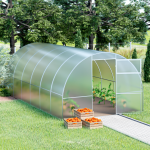
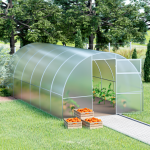
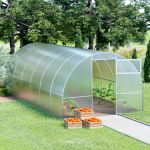
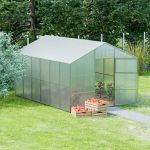
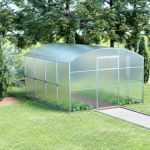



































































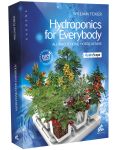
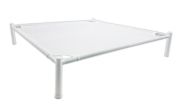
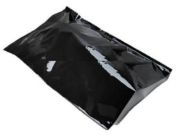
 Presents
Presents


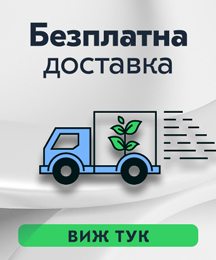

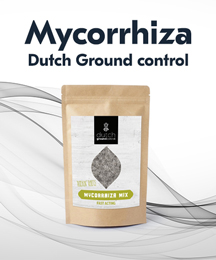




Post comment